A Neodymium (Nd-Fe-B) magnet is a common rare earth magnet composed of neodymium (Nd), iron (Fe), boron (B), and transition metals. They have superior performance in applications because of their strong magnetic field, which is 1.4 teslas (T), a unit of magnetic induction or flux density.
Neodymium magnets are categorized by how they are manufactured, which is sintered or bonded. They have become the most widely used of magnets since their development in 1984.
In its natural state, neodymium is ferromagnetic and can only be magnetized at extremely low temperatures. When it is combined with other metals, such as iron, it can be magnetized at room temperature.
The magnetic abilities of a neodymium magnet can be seen in the image on the right.
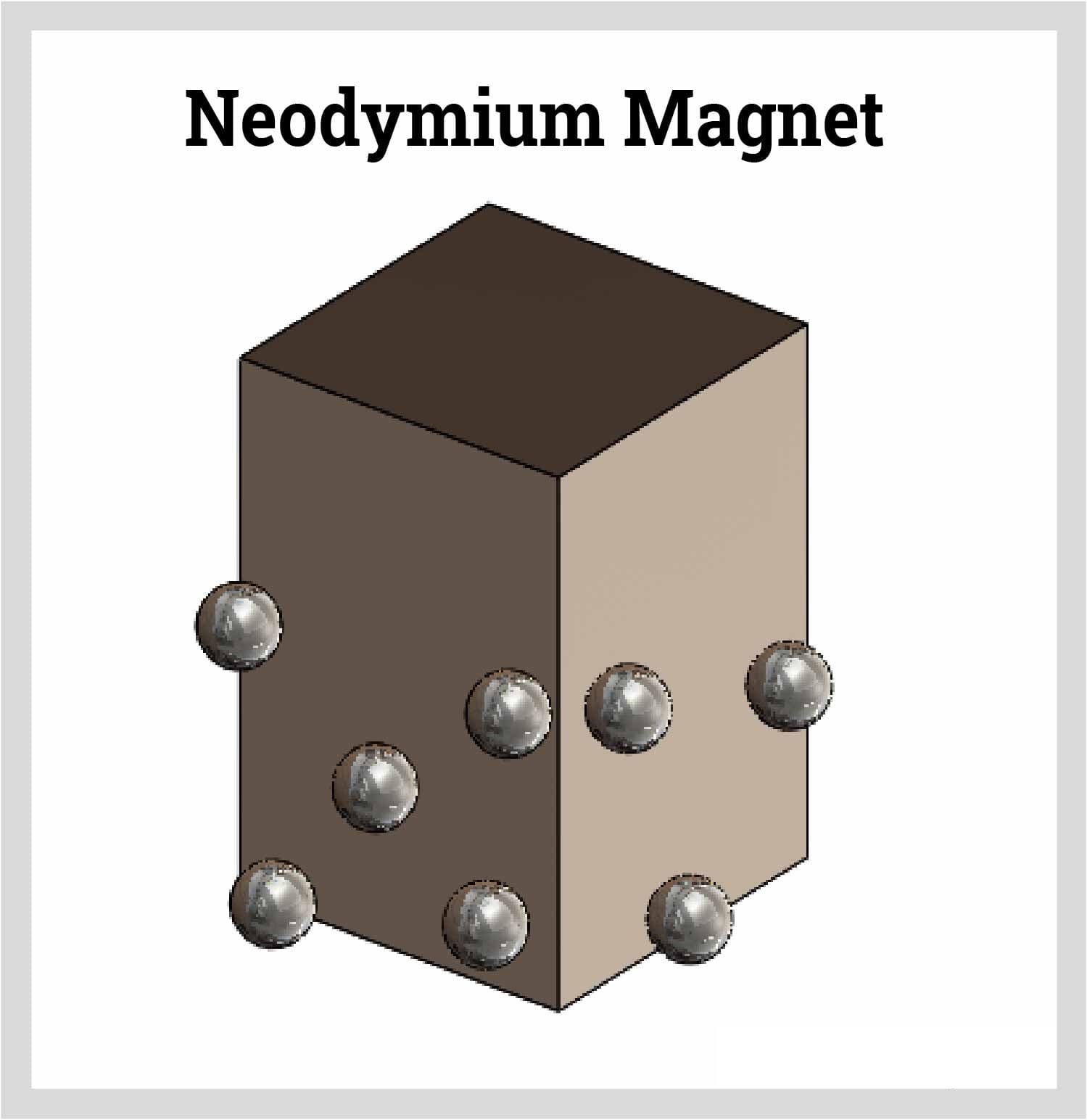
The two types of rare earth magnets are neodymium and samarium cobalt. Prior to the discovery of neodymium magnets, samarium cobalt magnets were the most commonly used but were replaced by neodymium magnets due to the expense of manufacturing samarium cobalt magnets.
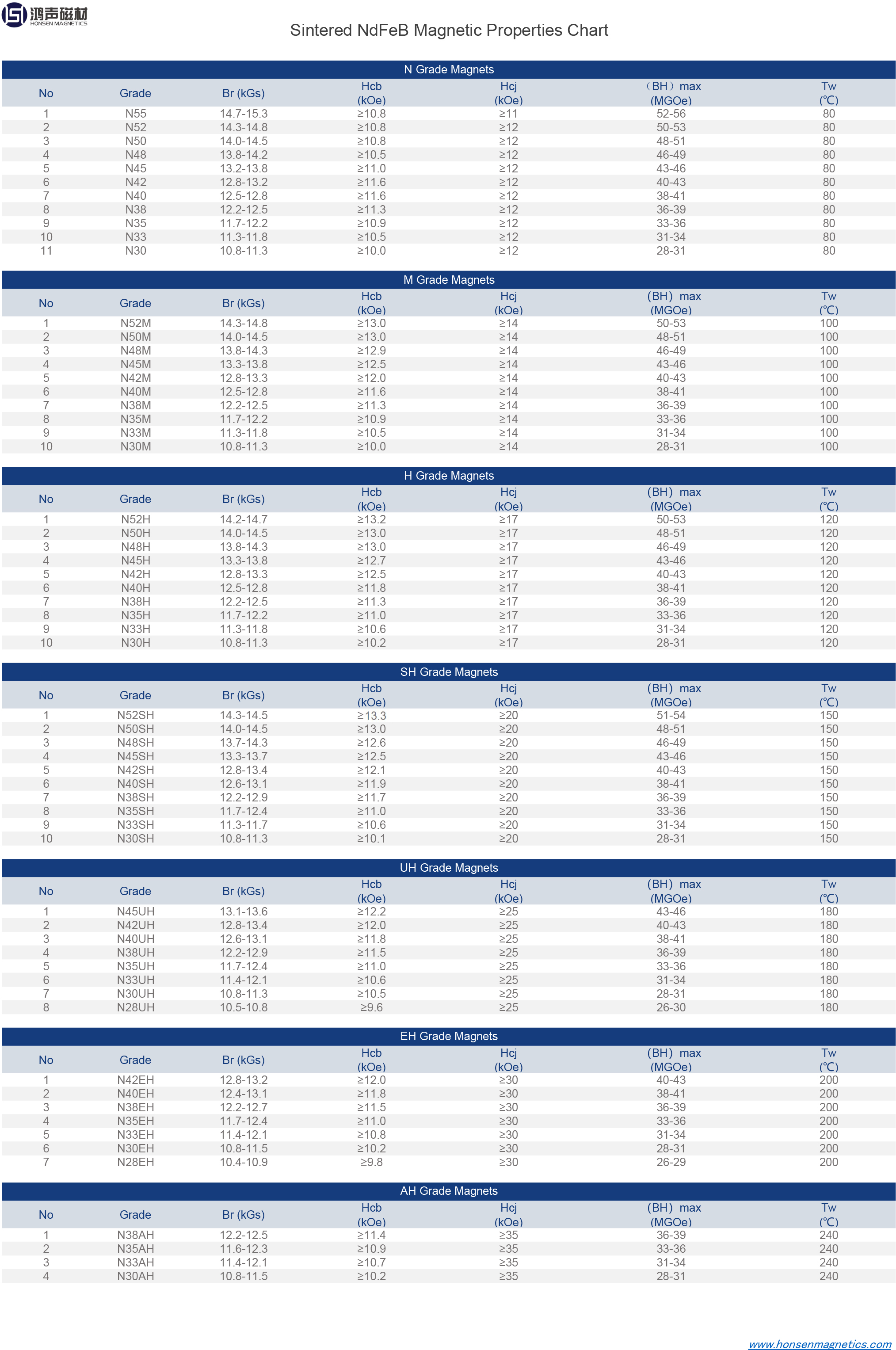
What are the Properties of a Neodymium Magnet?
The main characteristic of neodymium magnets is how strong they are for their size. The magnetic field of a neodymium magnet occurs when a magnetic field is applied to it and the atomic dipoles align, which is the magnetic hysteresis loop. When the magnetic field is removed, part of the alignment remains in the magnetized neodymium.
The grades of neodymium magnets indicate their magnetic strength. The higher the grade number, the stronger is the magnet‘s power. The numbers come from their properties expressed as mega gauss Oersteds or MGOe, which is the strongest point of its BH Curve.
The "N" grading scale begins at N30 and goes to N52, though N52 magnets are seldom used or only used in special cases. The "N" number may be followed by two letters, such as SH, which indicate the magnet's coercivity (Hc). The higher the Hc, the higher the temperature the neo magnet can endure before it loses its output.
The chart below lists the most common grades of neodymium magnets presently being used.
The Properties of Neodymium Magnets
Remanence:
When neodymium is placed in a magnetic field, the atomic dipoles align. After being removed from the field, a portion of the alignment remains creating magnetized neodymium. Remanence is the flux density that remains when the external field returns from a value of saturation to zero, which is the residual magnetization. The higher the remanence, the higher the flux density. Neodymium magnets have a flux density of 1.0 to 1.4 T.
The remanence of neodymium magnets varies depending on how they are made. Sintered neodymium magnets have a T of 1.0 to 1.4. Bonded neodymium magnets have a 0.6 to 0.7 T.
Coercivity:
After neodymium is magnetized, it does not return to zero magnetization. To get it back to zero magnetization, it has to be driven back by a field in the opposite direction, which is called coercivity. This property of a magnet is its ability to withstand the influence of an external magnetic force without being demagnetized. Coercivity is the measure of the intensity needed from a magnetic field to reduce the magnetization of a magnet back to zero or the resistance of a magnet to be demagnetized.
Coercivity is measured in oersted or ampere units labeled as Hc. The coercivity of neodymium magnets depends on how they are manufactured. Sintered neodymium magnets have a coercivity of 750 Hc to 2000 Hc, while bonded neodymium magnets have a coercivity of 600 Hc to 1200 Hc.
Energy Product:
The density of the magnetic energy is characterized by the maximum value of flux density times the magnetic field strength, which is the amount of magnetic flux per unit surface area. The units are measured in teslas for SI units and its Gauss with the symbol for flux density being B. Magnetic flux density is the sum of the external magnetic field H and the magnetic body magnetic polarization J in SI units.
Permanent magnets have a B field in their core and surroundings. The direction of the B field‘s strength is attributed to the points inside and outside the magnet. A compass needle in a B field of a magnet points itself toward the field direction.
There is no simple way to calculate flux density of magnetic shapes. There are computer programs that can make the calculation. Simple formulas can be used for less complex geometries.
The intensity of a magnetic field is measured in Gauss or Teslas and is the common measurement of a magnet's strength, which is a measure of the density of its magnetic field. A gauss meter is used to measure a magnet‘s flux density. The flux density for a neodymium magnet is 6000 Gauss or less because it has a straight line demagnetization curve.
Curie Temperature:
The curie temperature, or curie point, is the temperature at which magnetic materials have a change in their magnetic properties and become paramagnetic. In magnetic metals, magnetic atoms are aligned in the same direction and reinforce each other‘s magnetic field. Raising the curie temperature changes the arrangement of the atoms.
Coercivity increases as the temperature increases. Though neodymium magnets have high coercivity at room temperature, it goes down as the temperature rises until it reaches the curie temperature, which can be around 320° C or 608° F.
Regardless of how strong neodymium magnets may be, extreme temperatures can alter their atoms. Prolonged exposure to high temperatures can cause them to completely lose their magnetic properties, which begins at 80° C or 176° F.
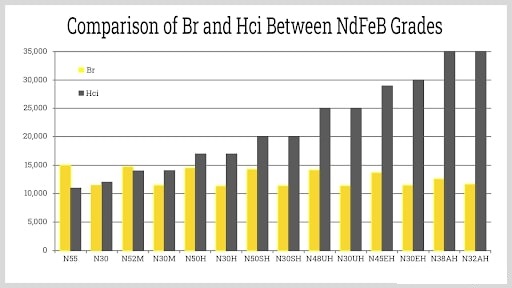
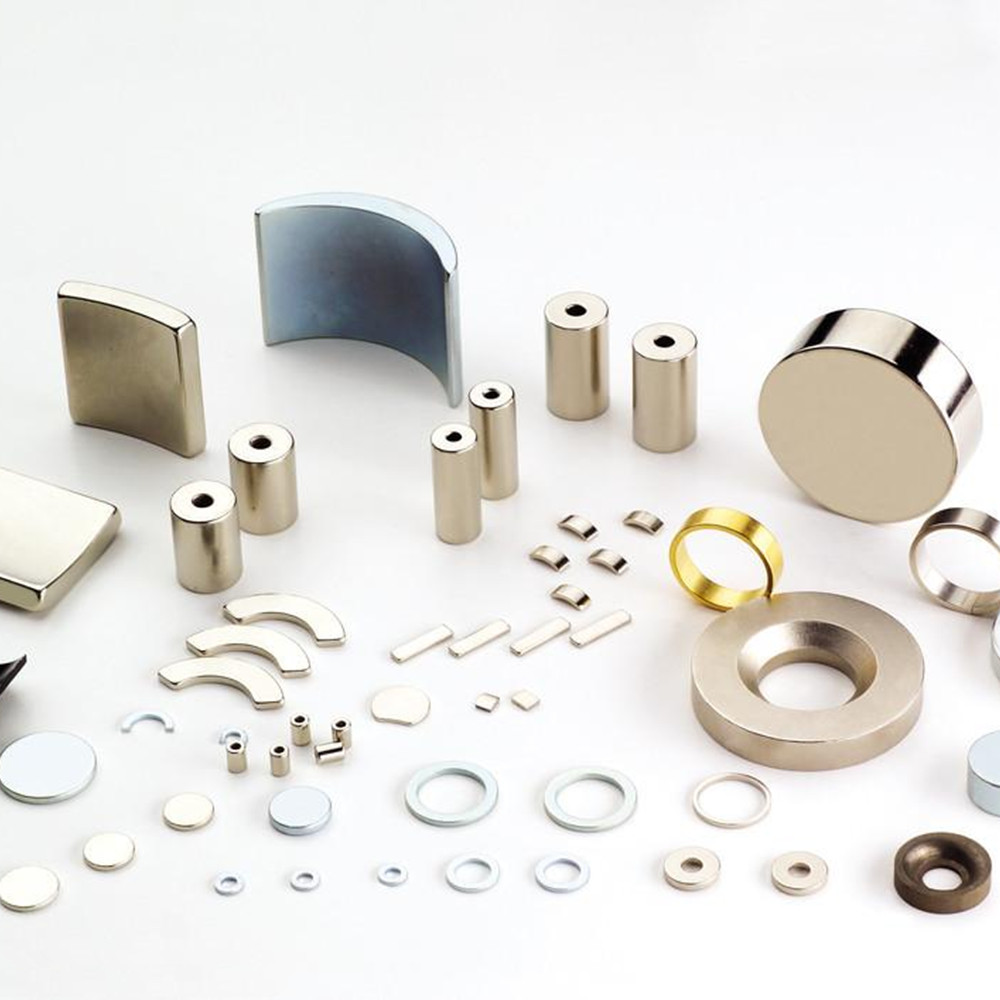
How are Neodymium Magnets Made?
The two processes used to manufacture neodymium magnets are sintering and bonding. The properties of the finished magnets vary depending on how they are produced with sintering being the best of the two methods.
How Neodymium Magnets are Made
Sintering
-
Melting:
The Neodymium, Iron and Boron are measured out and put in a vacuum induction furnace to form an alloy. Other elements are added for specific grades, such as cobalt, copper, gadolinium, and dysprosium to assist with corrosion resistance. Heating is created by electrical eddy currents in a vacuum to keep contaminants out. The neo alloy mixture is different for each manufacturer and grade of neodymium magnet.
-
Powdering:
The melted alloy is cooled and formed into ingots. The ingots are jet milled in a nitrogen and argon atmosphere to create a micron-sized powder. The neodymium powder is put in a hopper for pressing.
-
Pressing:
The powder is pressed into a die slightly larger than the desired shape by a process known as upsetting at a temperature of about 725° C. The larger shape of the die allows for shrinkage during the sintering process. During pressing, the material is exposed to a magnetic field. It is placed in a second die to be pressed into a wider shape to align the magnetization parallel to the direction of pressing. Some methods include fixtures to generate magnetic fields during pressing to align the particles.
Before the pressed magnet is released, it receives a demagnetizing pulse to leave it demagnetized to create a green magnet, which easily crumbles and has poor magnetic properties.
-
Sintering:
Sintering, or frittage, compacts and forms the green magnet using heat below its melting point to give it its final magnetic properties. The process is carefully monitored in an inert, oxygen-free atmosphere. Oxides can destroy a neodymium magnet‘s performance. It is compressed at temperatures reaching 1080° C but below its melting point to force the particles to adhere to each other.
A quench is applied to rapidly cool the magnet and minimize phases, which are variants of the alloy that have poor magnetic properties.
-
Machining:
Sintered magnets are ground using diamond or wire cutting tools to shape them to the correct tolerances.
-
Plating and coating:
Neodymium oxidizes quickly and is prone to corrosion, which can remove its magnetic properties. As a protection, they are coated with plastic, nickel, copper, zinc, tin, or other forms of coatings.
-
Magnetization:
Though the magnet has a direction of magnetization, it is not magnetized and has to be briefly exposed to a strong magnetic field, which is a coil of wire that surrounds the magnet. The magnetizing involves capacitors and high voltage to produce a strong current.
-
Final Inspection:
Digital measuring projectors verifies the dimensions and x-ray fluorescence technology verifies the thickness of the plating. The coating is tested in other ways to ensure its quality and strength. The BH curve is tested by a hysteresis graph to confirm full magnification.
Bonding
Bonding, or compression bonding, is a die pressing process that uses a mixture of neodymium powder and an epoxy binding agent. The mixture is 97% magnetic material and 3% epoxy.
The epoxy and neodymium mixture is compressed in a press or extruded and cured in an oven. Since the mixture is pressed into a die or put through extrusion, magnets can be molded into complex shapes and configurations. The compression bonding process produces magnets with tight tolerances and does not require secondary operations.
Compression bonded magnets are isotropic and can be magnetized in any direction, which includes multi-polar configurations. The epoxy binding makes the magnets strong enough to be milled or lathed but not be drilled or tapped.
Radial Sintered
Radially oriented neodymium magnets are the newest magnets on the magnet market. The process for producing radial aligned magnets has been known for many years but was not cost effective. Recent technological developments have streamlined the manufacturing process making radially oriented magnets easier to produce.
The three processes for manufacturing radial aligned neodymium magnets are anisotropic pressure molding, hot pressing backward extrusion, and radial rotating field alignment.
The sintering process ensures that there are no weak spots in the magnets structure.
The unique quality of radially aligned magnets is the direction of the magnetic field, which extends around the perimeter of the magnet. The south pole of the magnet is on the interior of the ring, while the north pole is on its circumference.
Radially oriented neodymium magnets are anisotropic and are magnetized from the inside of the ring to the outside. Radial magnetization increases the rings magnetic force and can be shaped into multiple patterns.
Radial neodymium ring magnets can be used for synchronous motors, stepping motors, and DC brushless motors for the automotive, computer, electronic, and communications industries.
Applications of Neodymium Magnets
Magnetic Separation Conveyors:
In the demonstration below, the conveyor belt is covered with neodymium magnets. The magnets are arranged with alternating poles facing out that gives them a strong magnetic hold. Things not attracted to the magnets fall away, while the ferromagnetic material is dropped into a collecting bin.
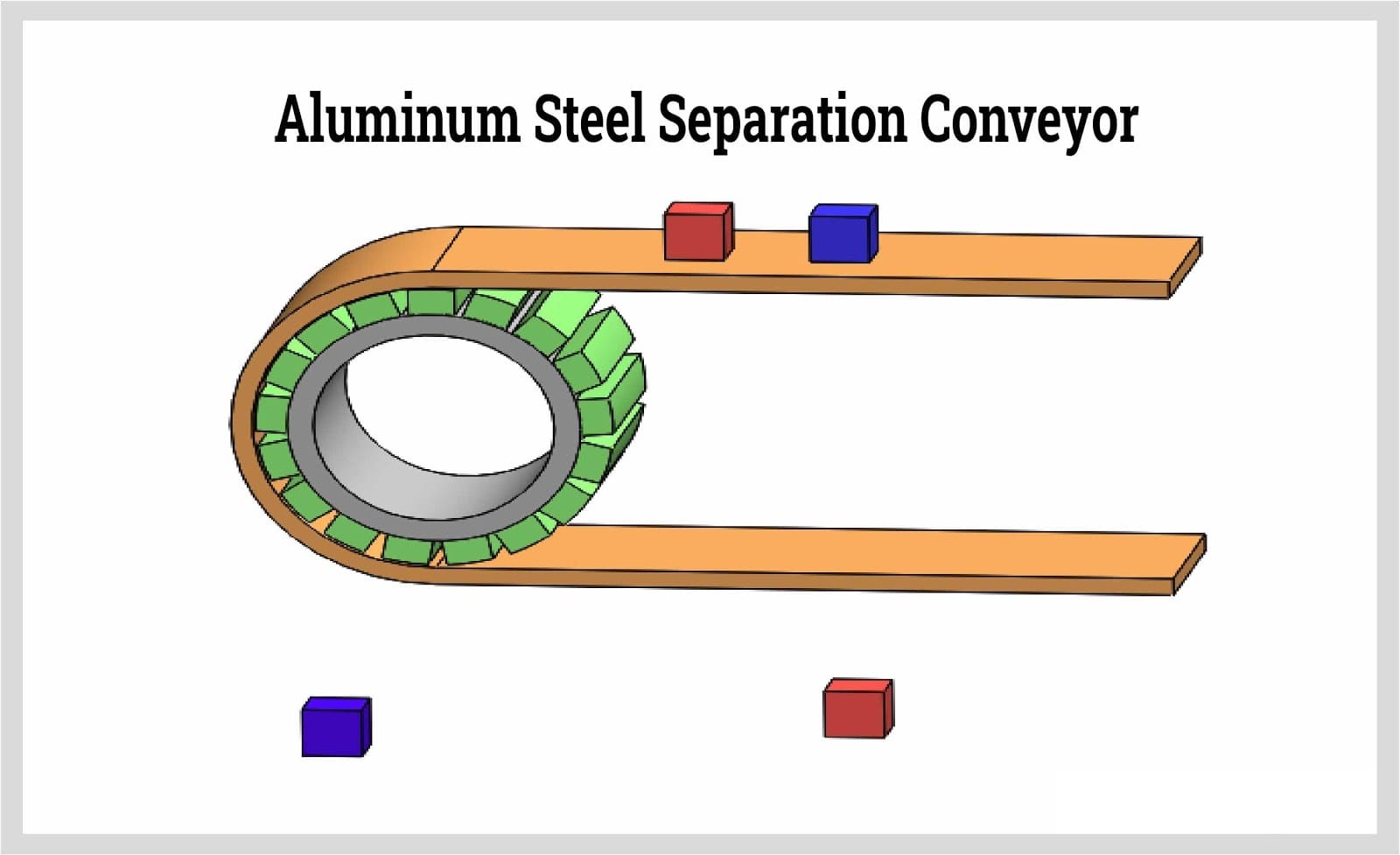
Hard disk drives:
Hard drives have tracks and sectors with magnetic cells. The cells are magnetized when data is written to the drive.
Electric Guitar Pickups:
An electric guitar pickup senses the vibrating strings and converts the signal into a weak electrical current to send to an amplifier and speaker. Electric guitars are unlike acoustic guitars that amplify their sound in the hollow box under the strings. Electric guitars can be solid metal or wood with their sound amplified electronically.
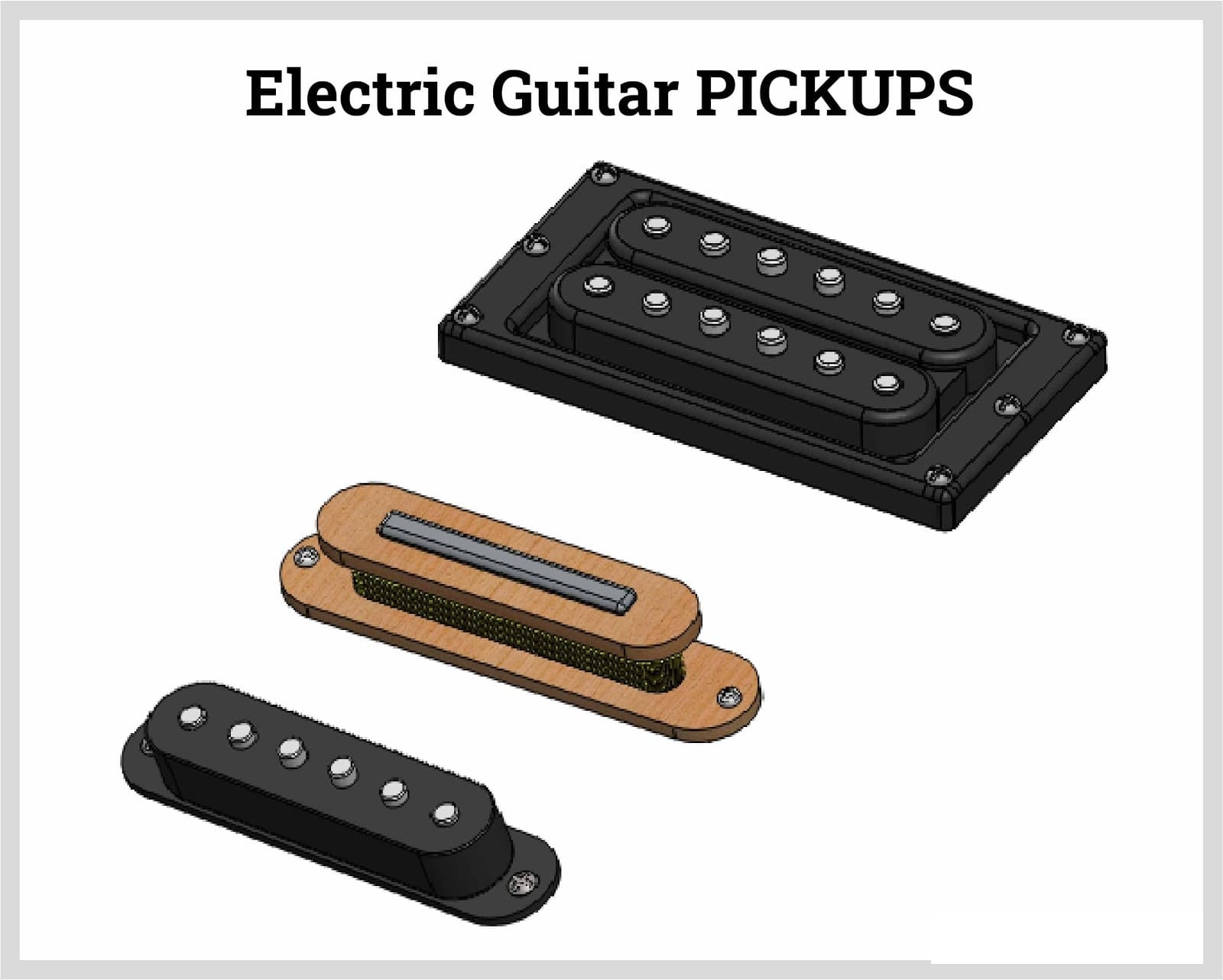
Water Treatment:
Neodymium magnets are used in water treatment to reduce scaling from hard water. Hard water has a high mineral content of calcium and magnesium. With magnetic water treatment, water passes through a magnetic field to capture scaling. The technology has not been completely accepted as effective. There have been encouraging results.
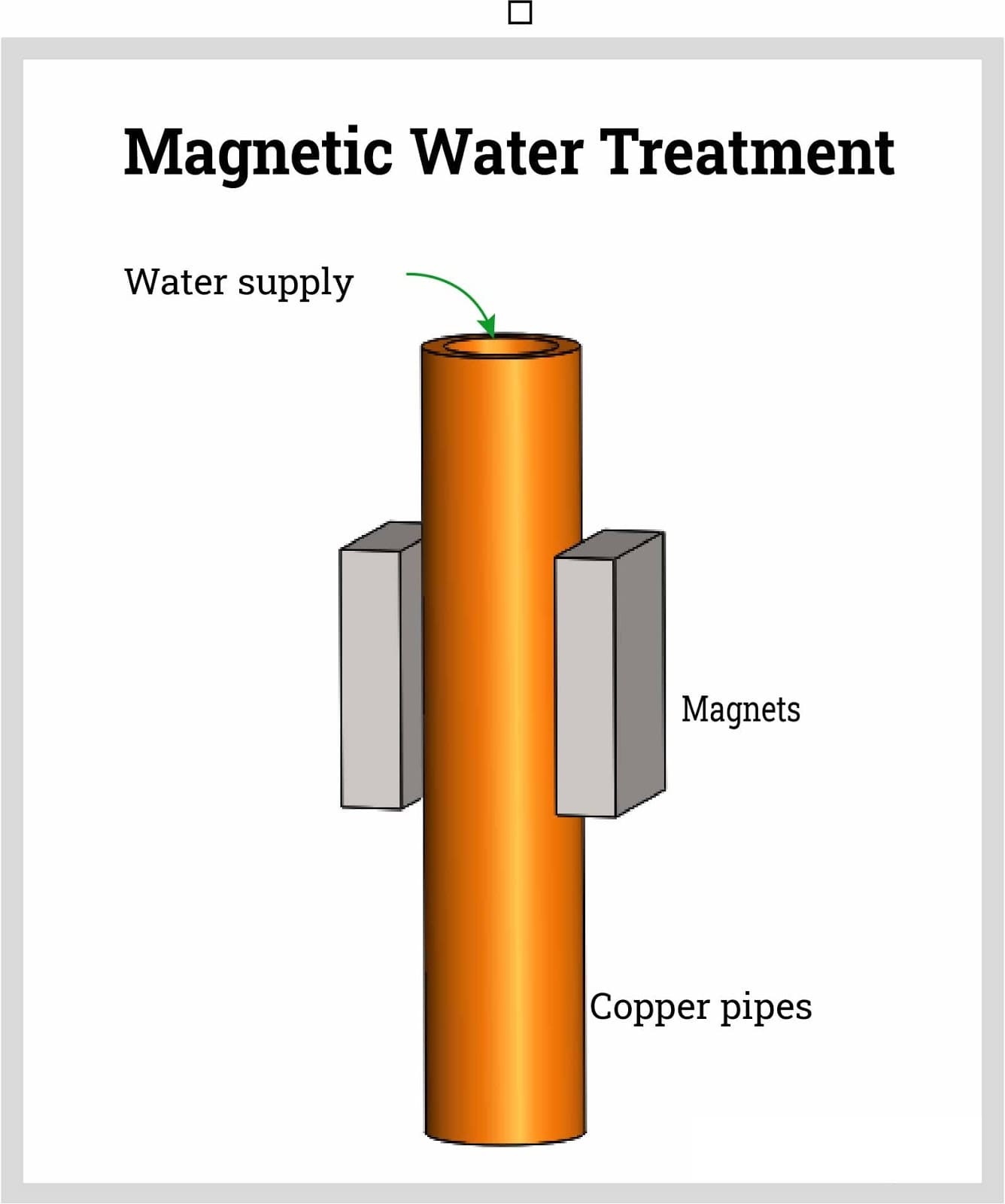
Reed Switches:
A reed switch is an electrical switch operated by a magnetic field. They have two contacts and metal reeds in a glass envelope. The contacts of the switch are open until activated by a magnet.
Reed switches are used in mechanical systems as proximity sensors in doors and windows for burglar alarm systems and tamper proofing. In laptops, reed switches put the laptop in sleep mode when the lid is closed. Pedal keyboards for pipe organs use reed switches that are in a glass enclosure for the contacts to protect them from dirt, dust, and debris.
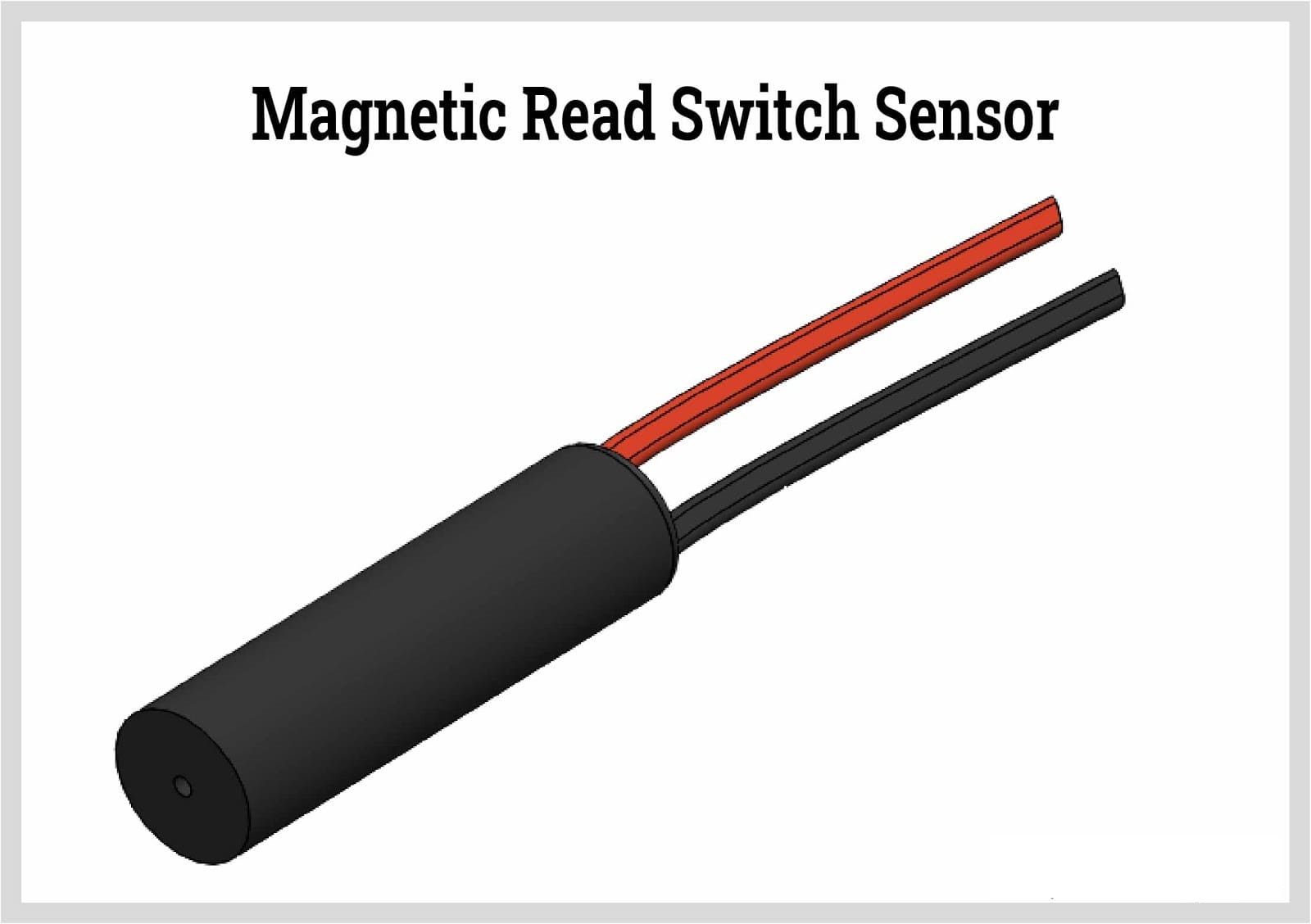
Sewing Magnets:
Neodymium sew in magnets are used for magnetic clasps on purses, clothing, and folders or binders. Sewing magnets are sold in pairs with one magnet being a+ and the other a-.
Denture Magnets:
Dentures can be held in place by magnets embedded in a patient‘s jaw. The magnets are protected from corrosion from saliva by stainless steel plating. Ceramic titanium nitride is applied to avoid abrasion and reduce exposure to nickel.
Magnetic Doorstops:
Magnetic doorstops are a mechanical stop that holds a door open. The door swings open, touches a magnet, and stays open until the door is tugged off the magnet.
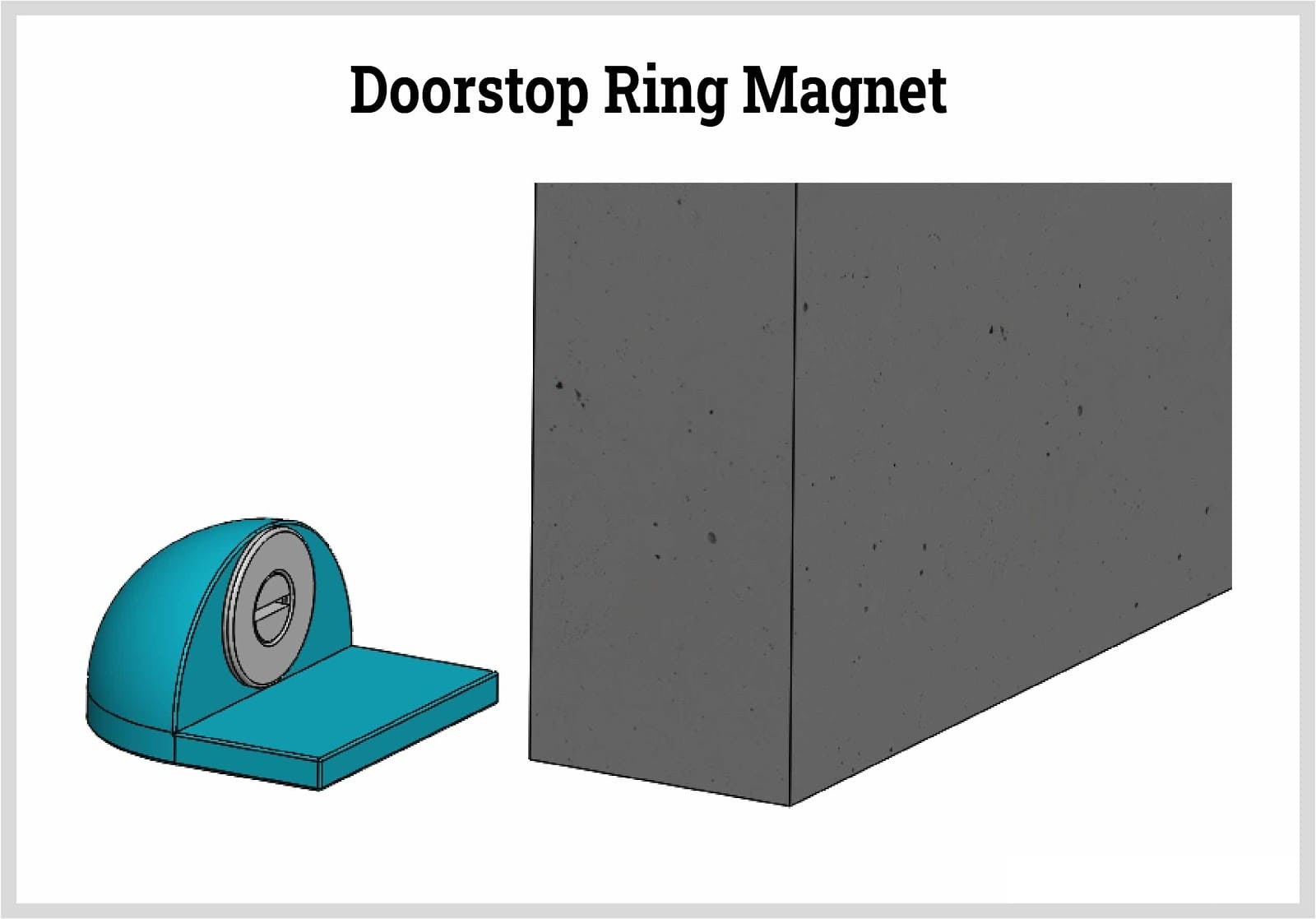
Jewelry Clasp:
Magnetic jewelry clasps come with two halves and are sold as a pair. The halves have a magnet in a housing of non-magnet material. A metal loop on the end attaches the chain of a bracelet or necklace. The magnet housings fit inside each other preventing side-to-side or shearing motion between the magnets to provide a sturdy hold.
Speakers:
Speakers convert electrical energy into mechanical energy or motion. The mechanical energy compresses air and converts motion to sound energy or sound pressure level. An electric current, sent through a wire coil, creates a magnetic field in a magnet attached to the speaker. The voice coil is attracted and repelled by the permanent magnet, which makes the cone, the voice coil is attached to, move back and forth. The cones motion creates pressure waves that are heard as sound.
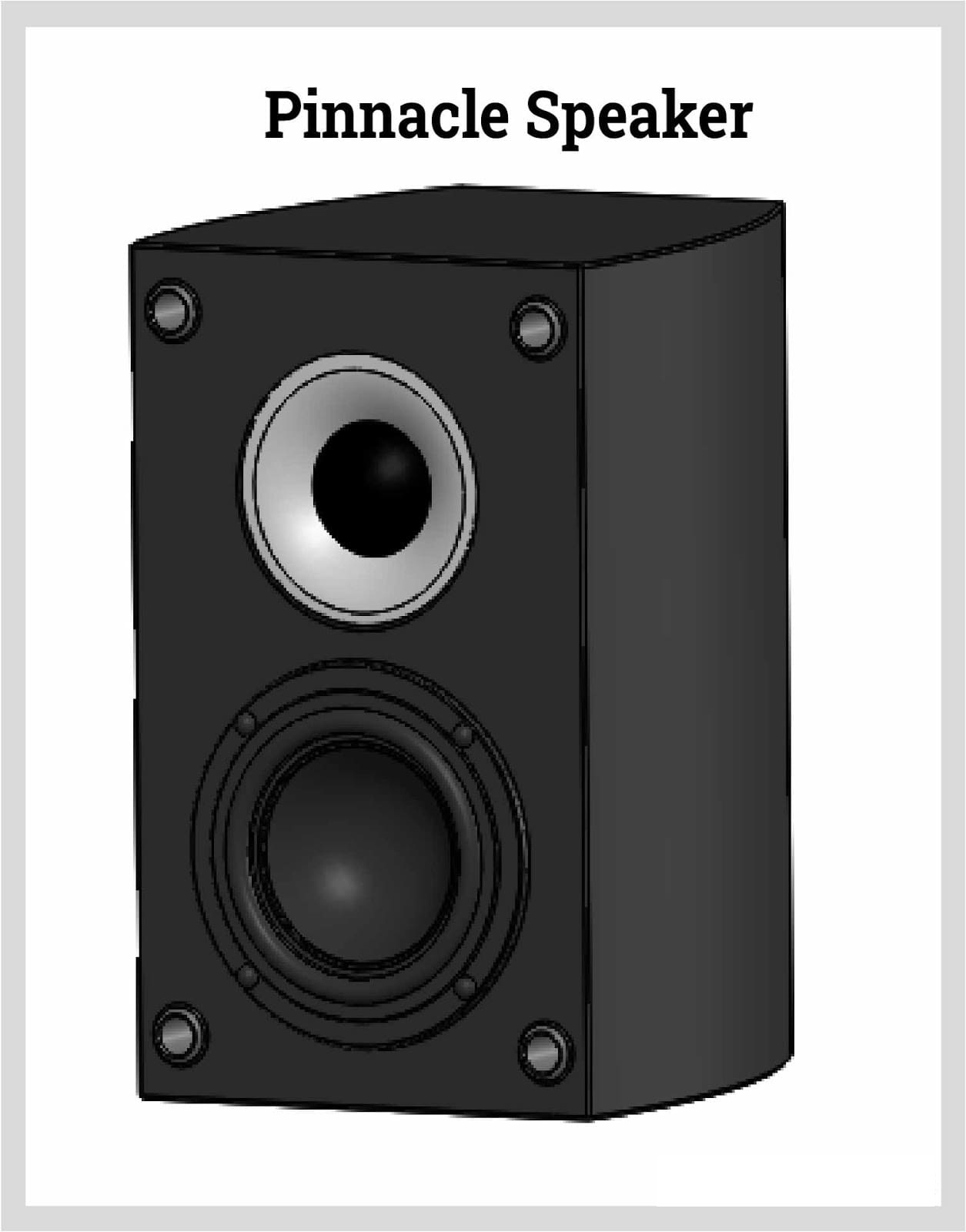
Anti-Lock Brake Sensors:
In anti-lock brakes, neodymium magnets are wrapped inside copper coils in the brake‘s sensors. An anti-lock braking system controls the rate wheels accelerate and de-accelerate by regulating the line pressure applied to the brake. The control signals, generated by the controller and applied to the brake pressure modulating unit, are taken from wheel speed sensors.
Teeth on the sensor ring rotate past the magnetic sensor, which causes a reversal of polarity of the magnetic field that sends a frequency signal to the angular velocity of the axle. The differentiation of the signal is the acceleration of the wheels.
Neodymium Magnet Considerations
As the most powerful and strongest magnets on earth, neodymium magnets can have damaging negative effects. It is important they be handled properly with consideration for the harm they can cause. Below are descriptions of some of the negative effects of neodymium magnets.
Negative Effects of Neodymium Magnets
Bodily Injury:
Neodymium magnets can jump together and pinch the skin or cause serious injuries. They can leap or slam together from several inches to several feet apart. If a finger is in the way, it can be broken or severely harmed. Neodymium magnets are more powerful than other kinds of magnets. The incredibly powerful force between them can often be surprising.
Magnet Breakage:
Neodymium magnets are brittle and can peel, chip, crack or shatter if they slam together, which sends small sharp metal pieces flying at great speed. Neodymium magnets are made of a hard, brittle material. Despite being made of metal, and having a shiny, metallic appearance, they are not durable. Eye protection should be worn when handling them.
Keep Away from Children:
Neodymium magnets are not toys. Children should not be allowed to handle them. Small ones can be a choking hazard. If multiple magnets are swallowed, they attach to one another through the intestine walls, which will cause severe health issues, requiring immediate, emergency surgery.
Danger to Pacemakers:
A field strength of ten gauss near a pacemaker or defibrillator can interact with the implanted device. Neodymium magnets create strong magnetic fields, which can interfere with pacemakers, ICDs, and implanted medical devices. Many implanted devices deactivate when they are near a magnetic field.

Magnetic Media:
The strong magnetic fields from neodymium magnets can damage magnetic media such as floppy disks, credit cards, magnetic ID cards, cassette tapes, video tapes, damage older televisions, VCRs, computer monitors, and CRT displays. They should not be placed near electronic appliances.
GPS and Smartphones:
Magnetic fields interfere with compasses or magnetometers and internal compasses of smartphones and GPS devices. The International Air Transport Association and US Federal rules and regulations cover shipping of magnets.
Nickel Allergy:
If you have a nickel allergy, the immune system mistakes nickel as a dangerous intruder and produces chemicals to fight against it. An allergic reaction to nickel is redness and a skin rash. Nickel allergies are more common in women and girls. Approximately, 36 percent of women, under 18, have a nickel allergy. The way to avoid nickel allergy is to avoid nickel coated neodymium magnets.
Demagnetization:
Neodymium magnets retain their effectiveness up to 80° C or 175° F. The temperature that they begin to lose their effectiveness varies by grade, shape, and application.
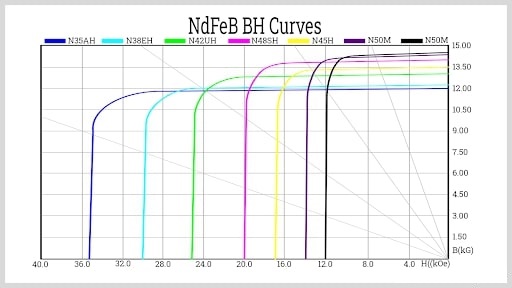
Flammable:
Neodymium magnets should not be drilled or machined. The dust and powder produced by grinding is flammable.
Corrosion:
Neodymium magnets are finished with some form of coating or plating to protect them from the elements. They are not waterproof and will rust or corrode when placed in wet or moist environments.
Standards and Regulations for Neodymium Magnet Use
Though neodymium magnets have a strong magnetic field, they are very brittle and require special handling. Several industrial monitoring agencies have developed regulations regarding the handling, manufacture, and shipping of neodymium magnets. A brief description of a few of the regulations is listed below.
Standards and Regulations for Neodymium Magnets
American Society of Mechanical Engineers:
The American Society of Mechanical Engineers (ASME) has standards for Below-The-Hook Lifting Devices. Standard B30.20 applies to installation, inspection, testing, maintenance and operation of lifting devices, which includes lifting magnets where the operator positions the magnet on the load and guides the load. ASME standard BTH-1 is applied in conjunction with ASME B30.20.
Hazard Analysis and Critical Control Points:
Hazard Analysis and Critical Control Points (HACCP) is an internationally recognized preventive risk management system. It examines food safety from biological, chemical, and physical hazards by requiring the identification and control of hazards at certain points in the production process. It offers certification for equipment used at food facilities. HACCP has identified and certified certain separation magnets used in the food industry.
United States Department of Agriculture:
Magnetic separation equipment has been approved by the United States Department of Agriculture Agricultural Marketing Service as being in compliance for use with two food processing programs:
- Dairy Equipment Review Program
- Meat and Poultry Equipment Review Program
Certifications is based on two standards or guidelines:
- Sanitary Design and Fabrication of Dairy Processing Equipment
- Sanitary Design and Fabrication of Meat and Poultry Processing Equipment which meet NSF/ANSI/3-A SSI 14159-1-2014 Hygiene Requirements
Restriction of Use of Hazardous Substances:
Restriction of Use of Hazardous Substances (RoHS) regulations limit the use of lead, cadmium, polybrominated biphenyl (PBB), mercury, hexavalent chromium, and polybrominated diphenyl ether (PBDE) flame retardants in electronic equipment. Since neodymium magnets can be hazardous, RoHS has developed standards for their handling and use.
International Civil Aviation Organization:
Magnets are determined to be a dangerous good for shipments outside the Continental United States to international destinations. Any packaged material, to be shipped by air, must have a magnetic field strength of 0.002 Gauss or more at a distance of seven feet from any point on the surface of the package.
Federal Aviation Administration:
Packages containing magnets being shipped by air must be tested to meet established standards. Magnet packages have to measure less than 0.00525 gauss at 15 feet from the package. Powerful and strong magnets have to have some form of shielding. There are numerous regulations and requirements to be met for shipping magnets by air because of the potential safety hazards.
Restriction, Evaluation, Authorization of Chemicals:
Restriction, Evaluation, and Authorization of Chemicals (REACH) is an international organization that is part of the European Union. It regulates and develops standards for hazardous materials. It has several documents that specify the proper use, handling, and manufacture of magnets. Much of the literature refers to the use of magnets in medical devices and electronic components.
Conclusion
- Neodymium (Nd-Fe-B) magnets, known as neo magnets, are common rare earth magnets composed of neodymium (Nd), iron (Fe), boron (B), and transition metals.
- The two processes used to manufacture neodymium magnets are sintering and bonding.
- Neodymium magnets have become the most widely used of the many varieties of magnets.
- The magnetic field of a neodymium magnet occurs when a magnetic field is applied to it and the atomic dipoles align, which is the magnetic hysteresis loop.
- Neodymium magnets can be produced in any size but retain their initial magnetic strength.
Post time: Jul-11-2022




